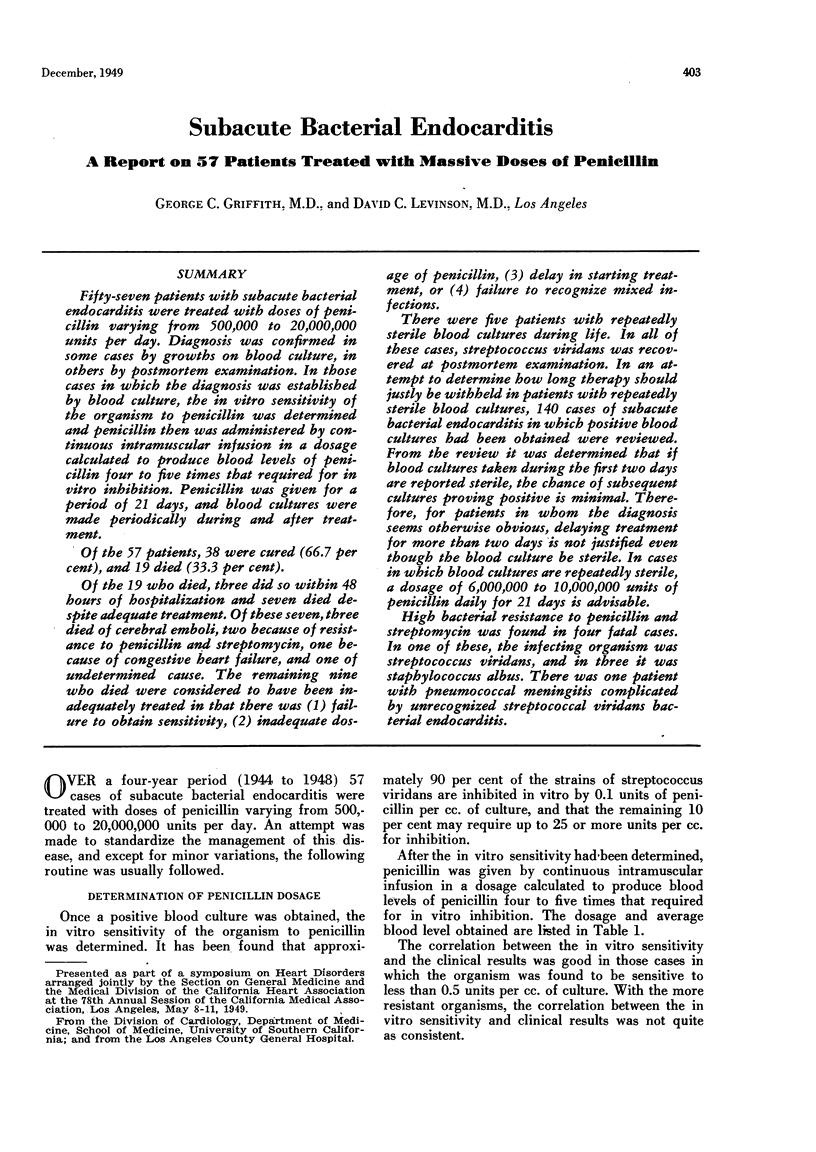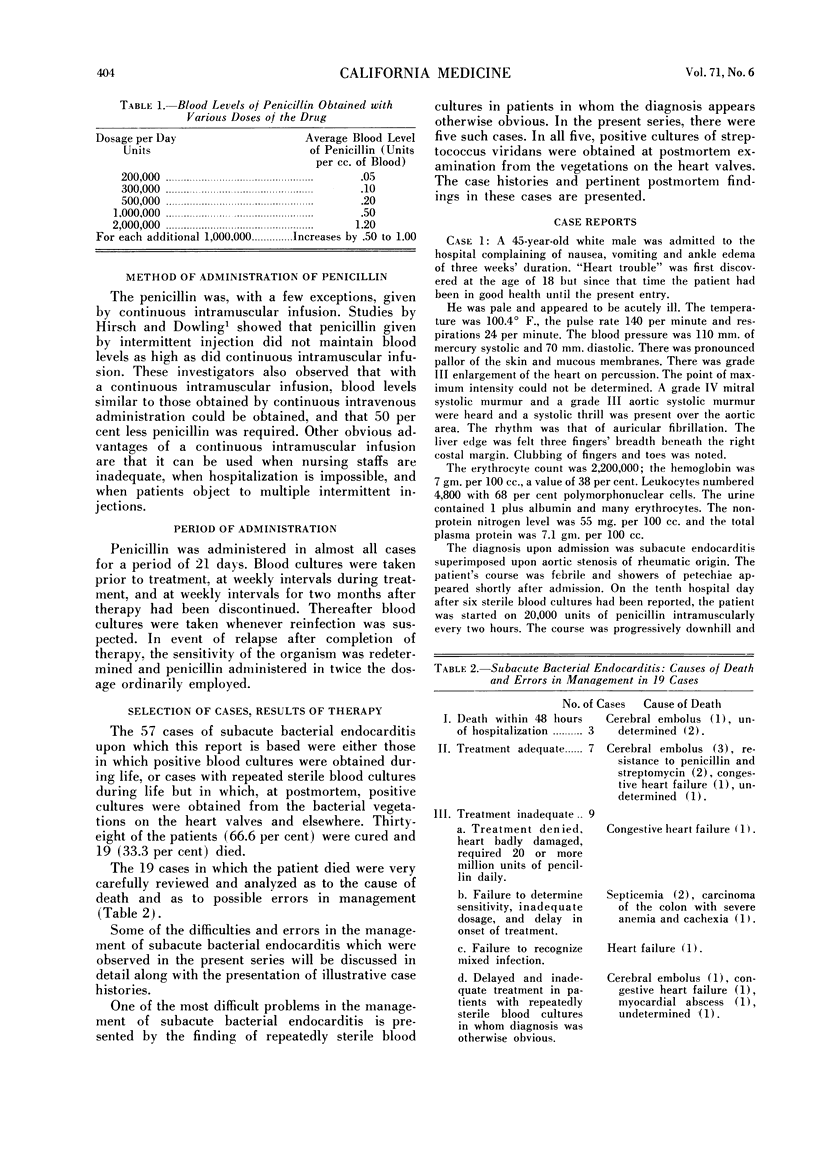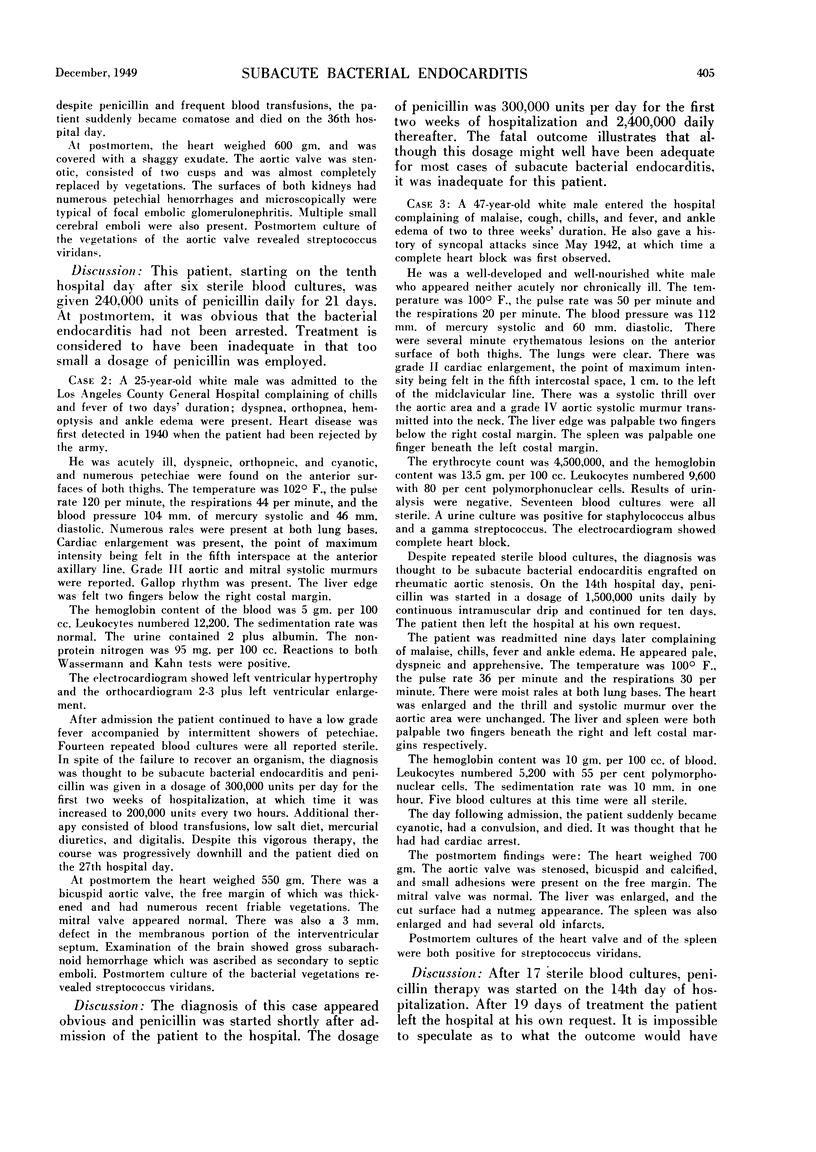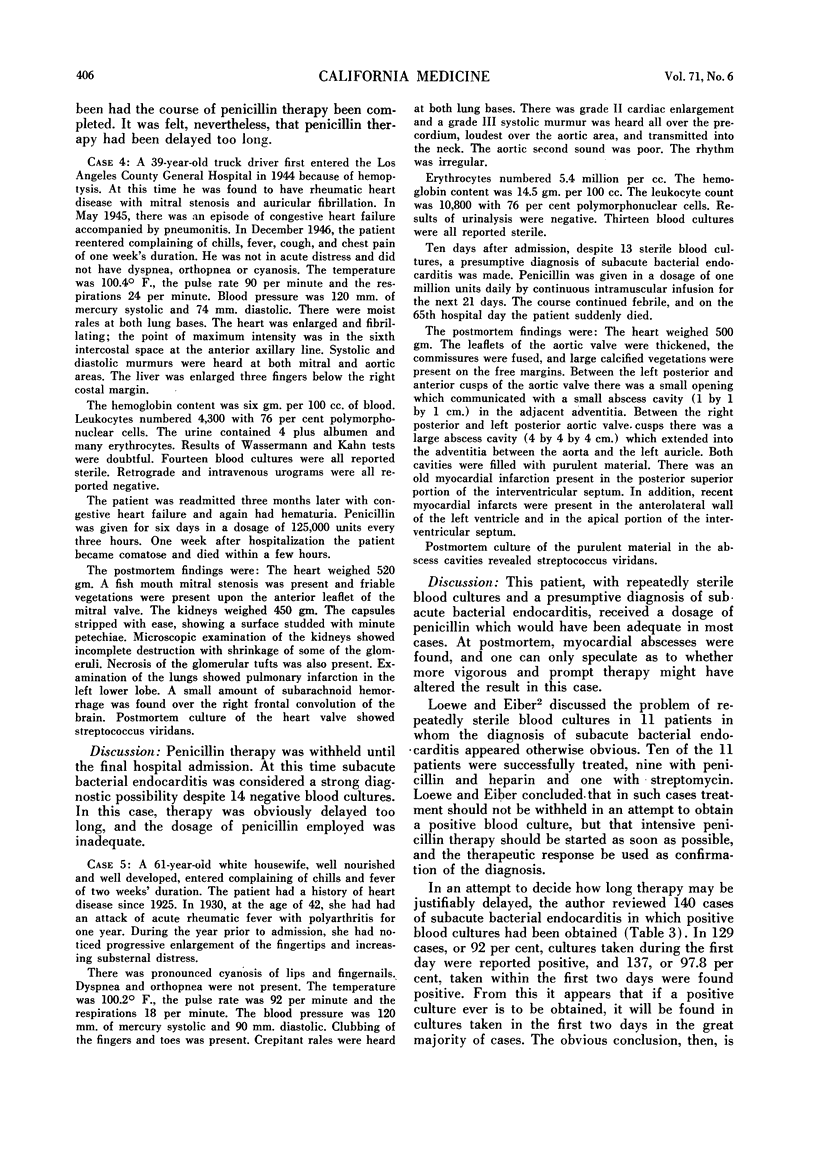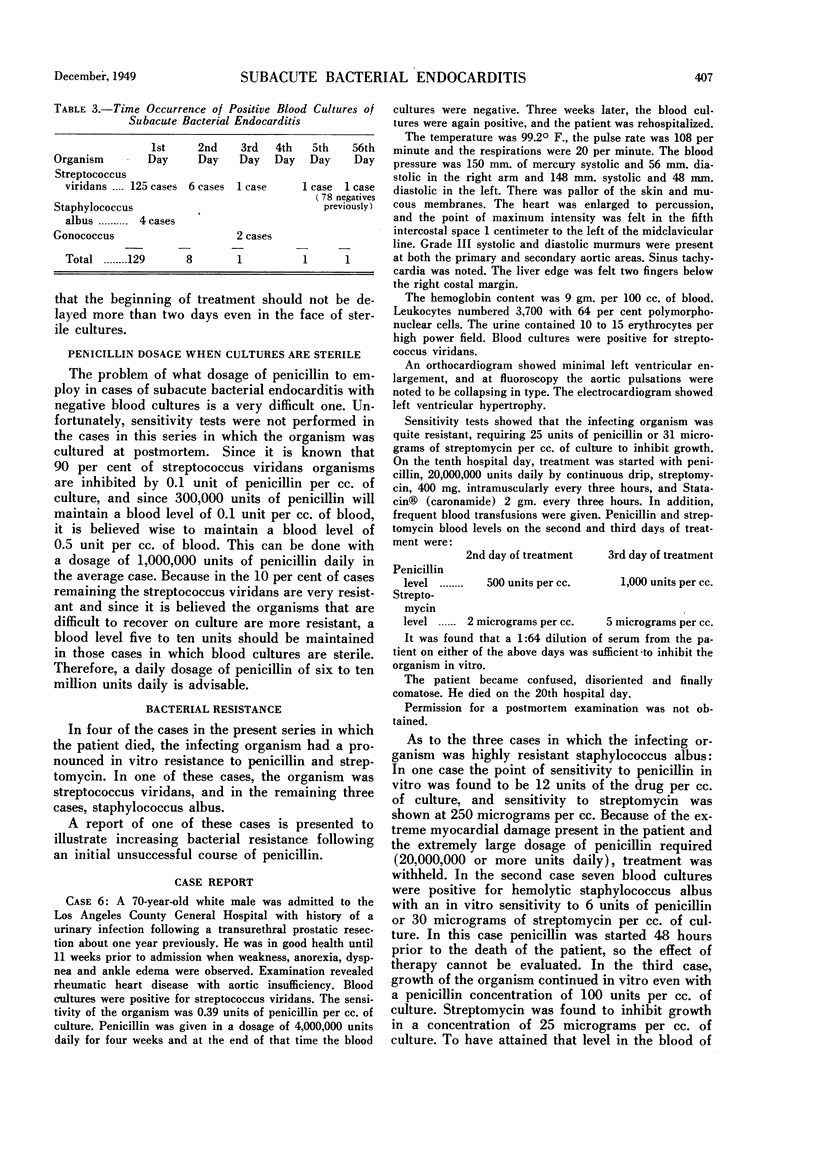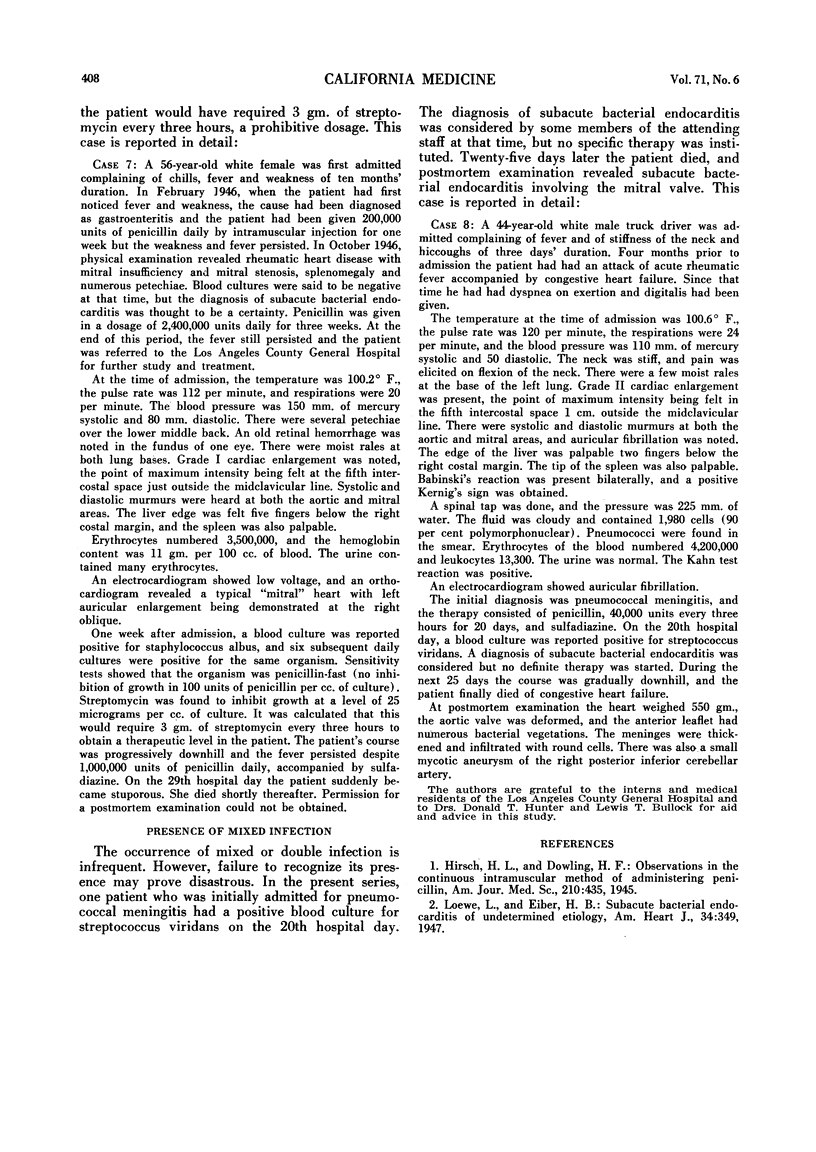Abstract
Fifty-seven patients with subacute bacterial endocarditis were treated with doses of penicillin varying from 500,000 to 20,000,000 units per day. Diagnosis was confirmed in some cases by growths on blood culture, in others by postmortem examination. In those cases in which the diagnosis was established by blood culture, the in vitro sensitivity of the organism to penicillin was determined and penicillin then was administered by continuous intramuscular infusion in a dosage calculated to produce blood levels of penicillin four to five times that required for in vitro inhibition. Penicillin was given for a period of 21 days, and blood cultures were made periodically during and after treatment.
Of the 57 patients, 38 were cured (66.7 per cent), and 19 died (33.3 per cent).
Of the 19 who died, three did so within 48 hours of hospitalization and seven died despite adequate treatment. Of these seven, three died of cerebral emboli, two because of resistance to penicillin and streptomycin, one because of congestive heart failure, and one of undetermined cause. The remaining nine who died were considered to have been inadequately treated in that there was (1) failure to obtain sensitivity, (2) inadequate dossage of penicillin, (3) delay in starting treatment, or (4) failure to recognize mixed infections.
There were five patients with repeatedly sterile blood cultures during life. In all of these cases, streptococcus viridans was recovered at postmortem examination. In an attempt to determine how long therapy should justly be withheld in patients with repeatedly sterile blood cultures, 140 cases of subacute bacterial endocarditis in which positive blood cultures had been obtained were reviewed. From the review it was determined that if blood cultures taken during the first two days are reported sterile, the chance of subsequent cultures proving positive is minimal. Therefore, for patients in whom the diagnosis seems otherwise obvious, delaying treatment for more than two days is not justified even though the blood culture be sterile. In cases in which blood cultures are repeatedly sterile, a dosage of 6,000,000 to 10,000,000 units of penicillin daily for 21 days is advisable.
High bacterial resistance to penicillin and streptomycin was found in four fatal cases. In one of these, the infecting organism was streptococcus viridans, and in three it was staphylococcus albus. There was one patient with penumococcal meningitis complicated by unrecognized streptococcal viridans bacterial endocarditis.
Full text
PDF